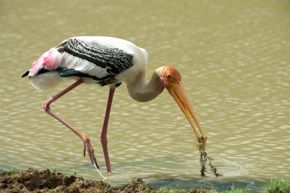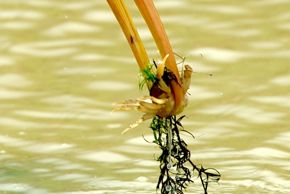“It was at Yala National Park, Sri Lanka, that we observed how a Painted Stork (Mycteria leucocephala) caught its prey. As the bird waded along, it used its feet to feel the ground, or was it using its feet to disturb its prey on the ground and under the water.
“As one can see, the bird is not able to see anything under the water so it must be feeling around for the prey. And or it must have very sensitive sensors in its bill to detect its prey. Whether it is detecting very faint electrical pluses emanating from the prey, at the moment we don’t know. And how is it that the bird is able to clam onto its prey with such ease and accuracy is really fascinating to witness.”
.
KC Tsang
Singapore
8th August 2010











